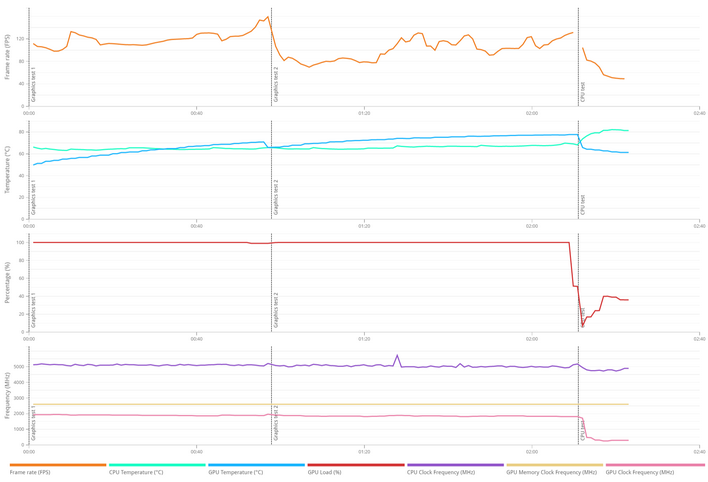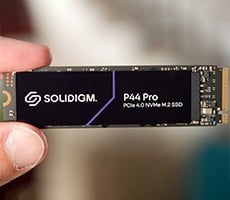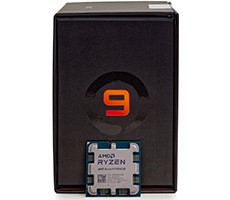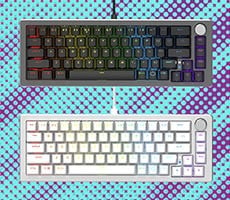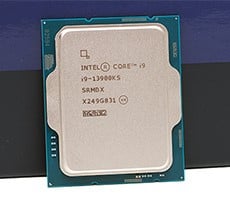AMD Ryzen 9 7950X3D Review: No Compromise Gaming And Creator Performance
For our next series of tests, we moved on to some graphics and game-related metrics with 3DMark, specifically the physics benchmark that's part of the Time Spy test, along with a handful of actual games. For the 3DMark Physics test, we simply create a custom 3DMark run consisting solely of the physics test, which is multi-threaded and CPU dependent, and report the results...
UL 3DMark CPU Physics Benchmark
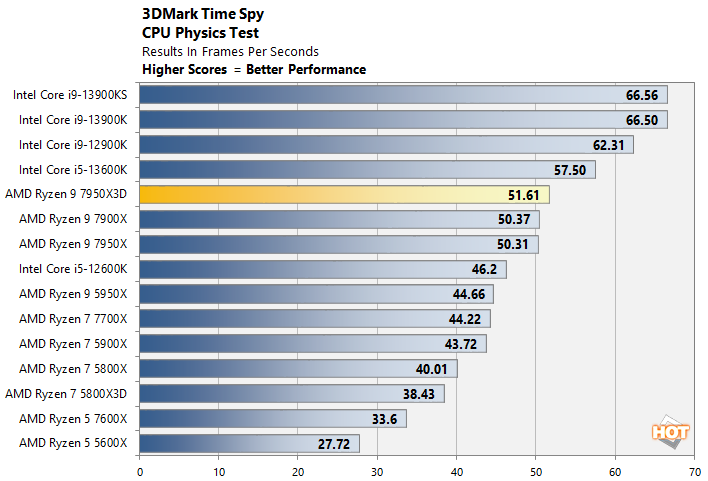
Our results in 3DMark's Physics test look much like the Y-Cruncher benchmark on the previous page. Once again we see the Core i9s in the overall lead, but the Ryzen 9 7950X3D is able to outgun the Ryzen 9 7950X and is ultimately AMD's fastest processor here.
High And Low Resolution Gaming & Graphics Benchmarks
We also ran some mid and high-resolution game and graphics tests on our test rigs with 3DMark, F1 2021, Metro Exodus, Shadow Of War and Shadow Of The Tomb Raider. We used 3DMark's default Time Spy preset, and the games were run in two different configurations -- either 1080p with Medium/High details, or 4K with High/Extreme details. The lower resolution tests are more CPU bound to somewhat isolate processor performance, while the higher resolution tests are more GPU bound.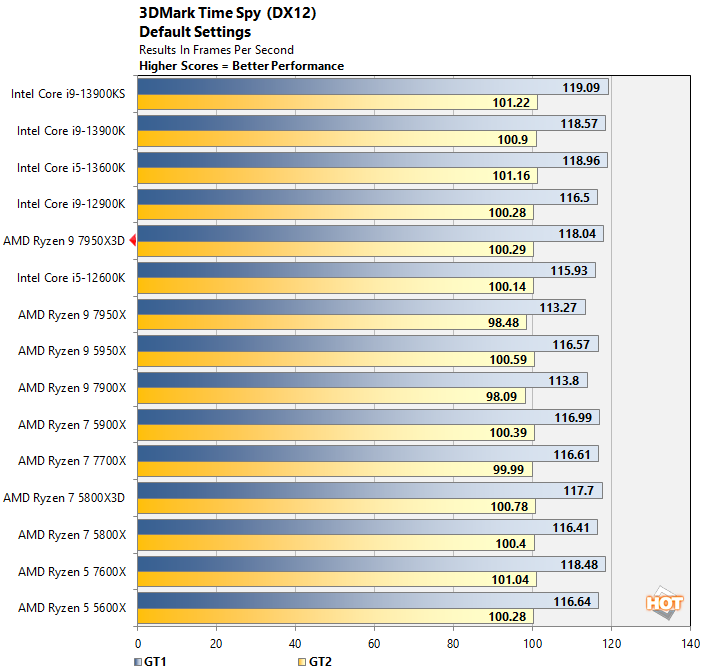
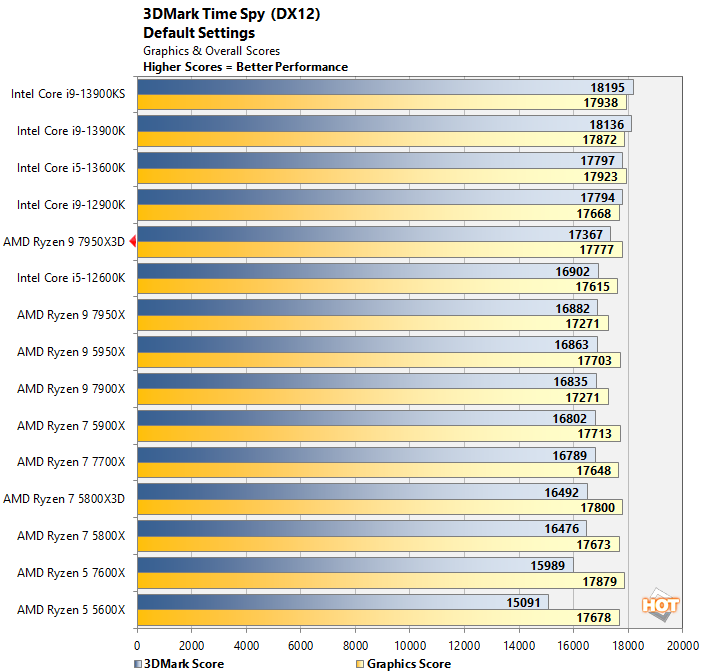
In the overall 3DMark Time Spy scores, the Intel Core i9-13900KS finishes at top of the charts, but we see the Ryzen 9 7950X3D outpacing the Ryzen 9 7950X yet again. However, the deltas separating all of the high-end chips here are quite small and effectively fall within the margin of error in this benchmark.
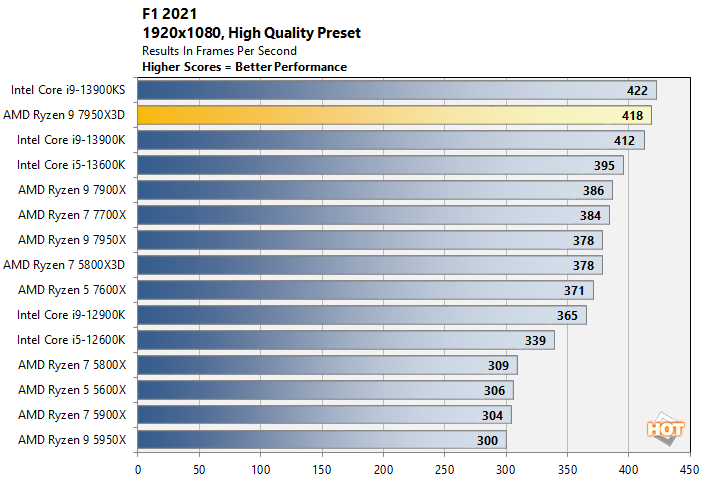
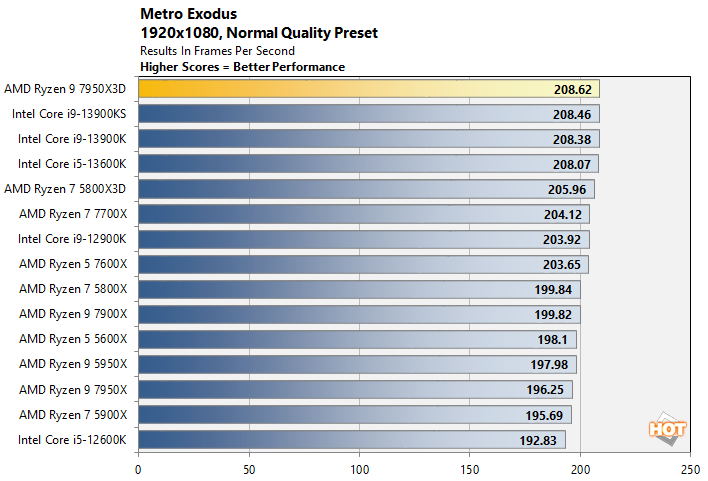
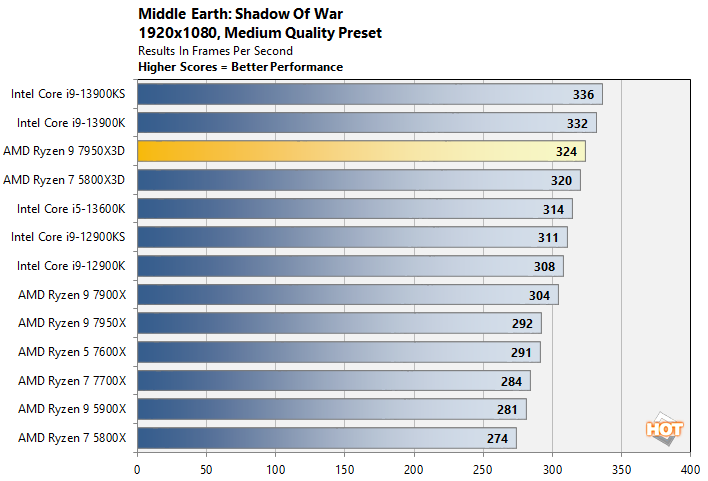
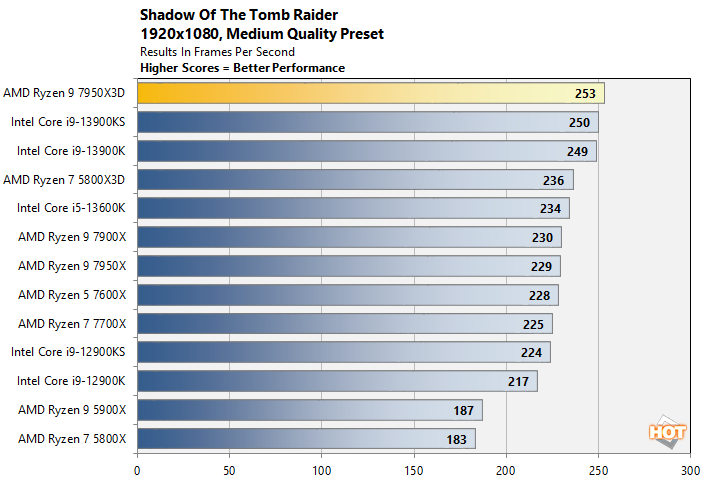
In our 1080P game tests, the Ryzen 9 7950X3D offers a massive increase in performance over the standard Ryzen 9 7950X3D in every game we tested and outguns the 13th Gen Core i9 chips in half of the tests. Although we have yet to test the other members of the Ryzen 7000X3D series, as it stands today, the Ryzen 9 7950X3D is easily AMD's fastest gaming processor to date and one of, if not the best gaming processor for PCs currently.
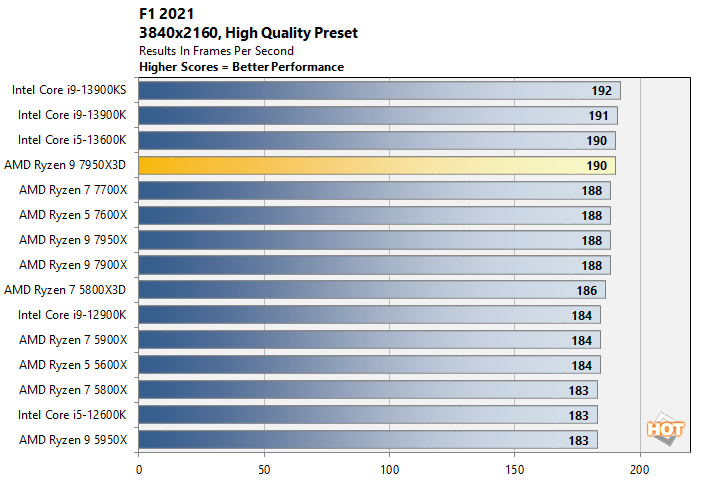
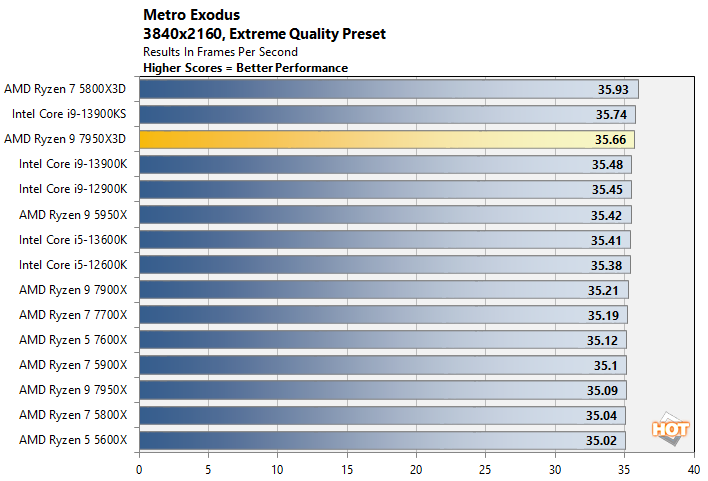
AMD Ryzen 9 7950X3D Total System Power Consumption
Throughout all of our benchmarking and testing, we also monitored how much power our test rigs were consuming with a power meter. Our goal here is to give you an idea as to how much power each configuration used while idling at the Windows desktop and while under taxing CPU workloads across one or all cores. Keep in mind, this is total system power consumption being measured at the outlet and not the the individual power being drawn by the CPUs alone.
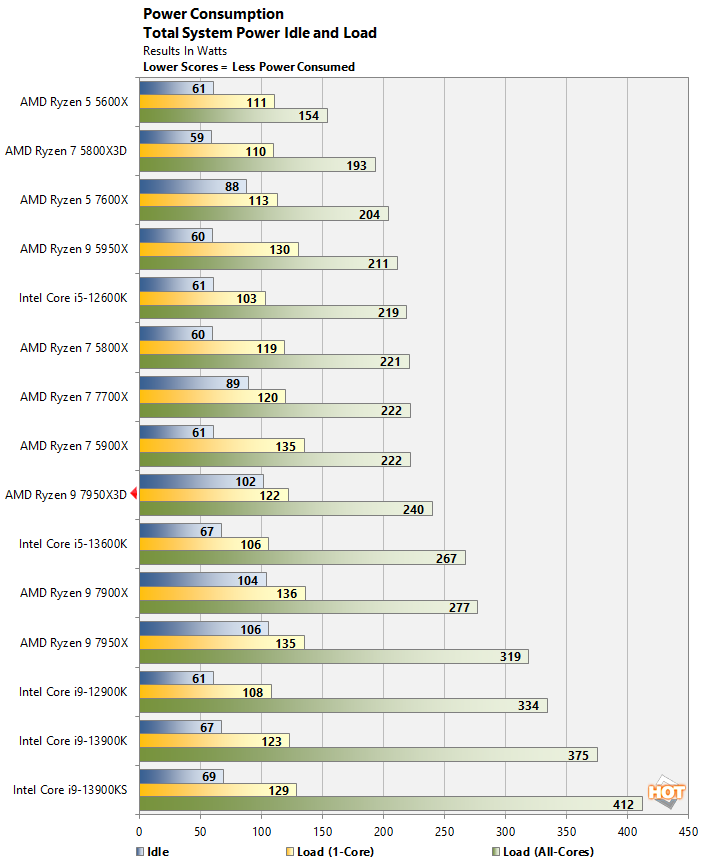
We know AMD had to the tweak the VFC on the AMD Ryzen 9 7950X3D to accommodate the sensitivities of the 3D V-Cache, but the extent to which it has done so has had a massive impact on power consumption. Despite offering extremely similar general performance to the standard Ryzen 9 7950X, the Ryzen 9 7950X3D consumes significantly lower peak power. Say what you want about the Ryzen 9 7950X3D's performance in comparison to its standard counterpart or Intels' Raptor Lake-based competition, but the Ryzen 9 7950X3D is clearly the efficiency champion, thanks to its moderate power consumption.
How power, frequencies, and thermals play out in a variety of workloads with the Ryzen 9 7950X3D is presented in the charts above. This data is gathered through a full PCMark 10 run. As you can see, the Ryzen 9 7950X3D's frequencies stay quite high nearing max turbo throughout, and temperature and power consumption are relatively tame overall. Once the sustained, multi-threaded POV-Ray workload is engaged at the very end, however, power and thermals peak, with the Ryzen 9 7950X3D hitting 89°C, which is its thermal limit.
If we look at similar data captured with a simulated gaming workload in 3DMark, the power and thermal story is similar, but CPU frequencies are less stable. This is expected with gaming workloads, where the demands on the CPU are vary and fluctuate wildly depending on the scene.


